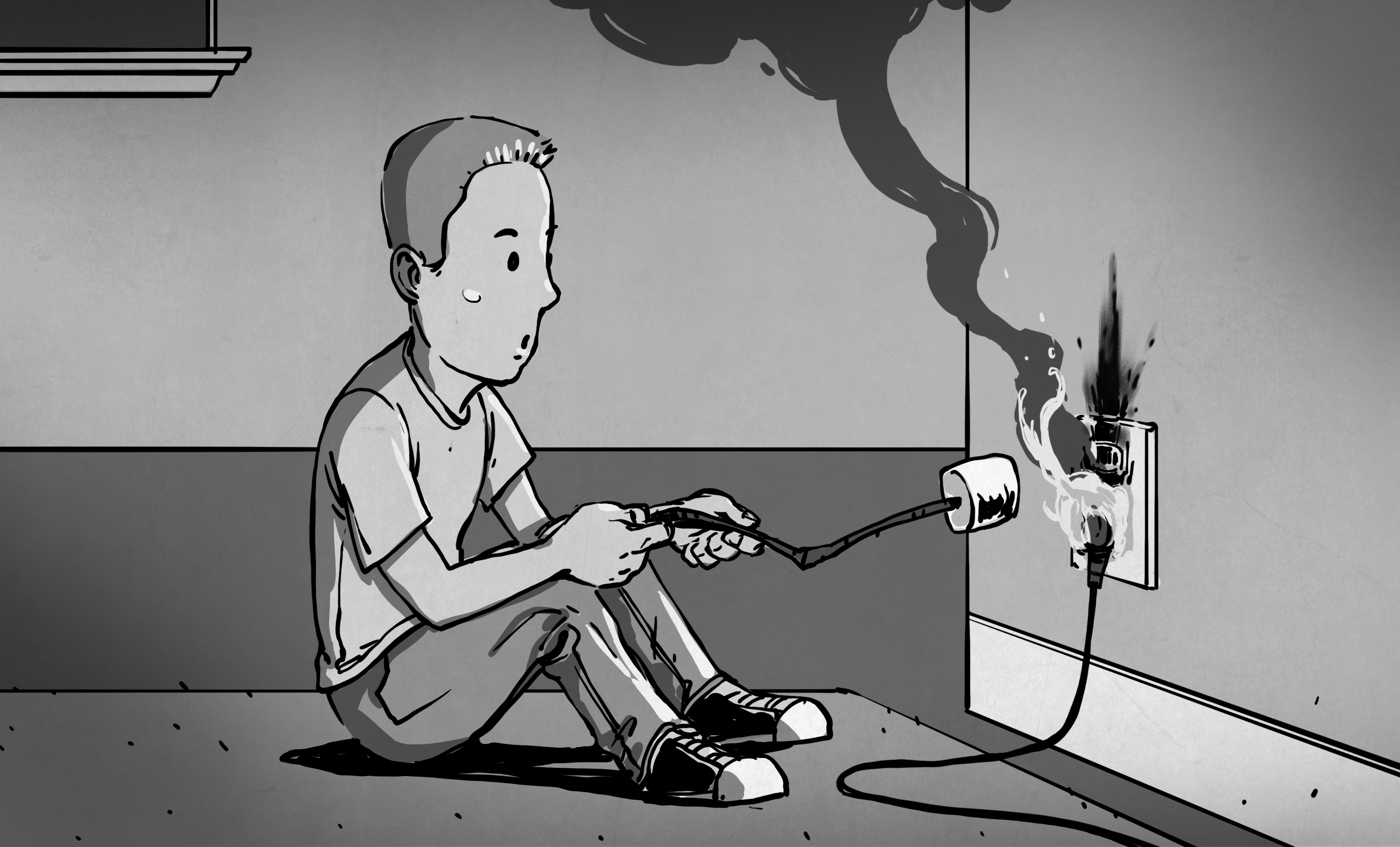Don't put that Litepower PSU back in that system. If you do, you are asking for problems and damaged hardware. It's a pile of crap.
I'm not sure what you bought to replace it is any better though. What is the exact model or series of the Gigabyte PSU you bought?
Also, your PSU should not EVER be plugged into a power strip of any kind unless it is an high end industrial type power strip. Those cheap strips are very problematic and by cheap, I mean anything sold by local home centers, Walmart, Belkin, Monster, sub-20.00 APC, anything branded Amazon, etc.
Your PSU should only EVER be plugged into two possible places. Directly into the power outlet on the wall or into a UPS battery backup. That's it, and that's all. Other things can be plugged into the power strip like your monitor(s), sound equipment, whatever, but don't plug your PSU into any power strip that does is not an industrial type product from APC, Tripp Lite, Eaton, Leviton, General Electric industrial, etc.
Years of experience using PC systems and having to diagnose bushels full of issues that a high number of ended up being faults with the circuitry inside the power strips. Primarily, cheap box store models but also a good number of supposedly premium power strip "surge protectors" that don't actually protect you from anything other than your own fear of what might happen if you actually end up needing a surge protector. A false sense of security.
Most people buy and use power strips because they THINK that the fact it says surge protector means something. Usually, it doesn't. This is one of my favorite quotes on the subject from an electrical engineer and residential/commercial electrical journeyman I know.
APC, Tripp-Lite, Leviton, Eaton, Leviton, General Electric, Polyphaser, Ditek, Siemens, ABB, Square D, Intermatic, Cutler-Hammer (Eaton), and Syscom, these are the brands you can trust to have high quality internal electronics if you MUST use a power strip. Do not however use a power strip thinking that it offers significant protection, because even the best of them does not, not really. Whole house protection is the only real protection from surges.
Monster and Belkin, and a few others that are commonly used, almost unilaterally use the same protections in their 45 dollar surge protector strips as what you would find in an 8 dollar Amazon or Walmart branded model. And if you ever take one of these, or any cheap box store, dollar store (Even worse than these others usually BUT occasionally about the same) or Harbor Freight power strip apart you are likely to find frayed wires, poorly soldered connections with blobs of solder nearly touching crucial and potential short circuit points, super low quality MOVs, and a ton of other indicators that no real integrity was involved in the design or manufacturer of these units.
Another factor to keep in mind is that even with some of these high quality units, any protection that MIGHT be afforded, is usually the end of that product after one shot. This, directly from the Tripp-Lite manual for the #1 selling surge protection power strip in the world.
I believe many models from APC and a couple of the others I listed have now incorporated designs that permanently disengage any ability of the device to deliver power once a surge or short of significant enough caliber to incur the protection has occured. That basically means once there has been a surge or short, throw the device away. Even for high end models. Only whole house protection and properly earthed circuits offer any true protection from a serious surge or direct strike from lightning somewhere close enough to affect your segment of the grid.
And whatever you do, don't EVER buy any kind of extension cord, power strip or other electronic device with slip rings.
A few weeks ago I needed a power strip in my home office. The outlet in question is located behind a filing cabinet so it would need a low profile plug. I jumped on Amazon to buy a surge suppressor…

hackaday.com
.



